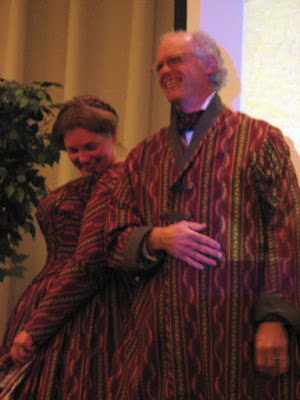— James T. Mason, sculptor and creator of the topiary interpretation of George Seurat’s famous painting A Sunday Afternoon on the Isle of La Grande Jatte


We recently visited the Topiary Park in Columbus, Ohio.
I've long been fascinated with topiaries, with the concept of training and clipping a living plant into a predetermined form.
The art of topiary has a long history. The Latin word for a landscape gardener is topiarus from which the word topiary is derived. From ancient writings it has been established that topiary has been practiced for at least 2,000 years. Used in the gardens of the wealthy from early Roman times through the 18th Century, it then had a short period of being out-of-style and was revived during the Victorian era. It is seldom seen now in private homes, but is still used in public gardens and commercial enterprises.
The Topiary Garden in Columbus are based on Seurat' s monumental painting, A Sunday Afternoon on the Isle of the Grand Jette.
Influenced by the Impressionists' experimentation with color, Postimpressionist painter Georges Seurat worked with innovative techniques. On an enormous canvas (6'10" x 10'1"), the artist depicted city dwellers gathered at a park on La Grande Jatte (literally, "the big platter"), an island in the River Seine.
Seruat spent two years on the painting , including many preliminary drawings and oil sketches of the many people , of all classes, using the park to stroll, lounge, sail, and fish.
Using newly discovered optical and color theories, Seurat rendered his subject by placing tiny, precise brush strokes of different colors close to one another so that they blend at a distance. Art critics subsequently named this technique Pointillism. With his precise method and technique, Seurat conceived of his painting as a reform of Impressionism. The precise contours, geometric shapes, and measured proportions and distances in Seurat’s masterpiece (not to mention its size) contrast significantly with the small, spontaneous canvases of Impressionism.
The painting is currently owned by the Art Institute of Chicago currently displays the painting, it's well worth a visit to see in person - just amazing.
But back to the garden...
It was dedicated in 1992 and as can be seen in the photo's, is still a definite work in progress.
The visible framework really does not detract from effect and how often can you walk into a work of art, circling the figures within and making yourself a part of the landscape?















 Which once dried, is bound to wire and bunched cotton.
Which once dried, is bound to wire and bunched cotton. Gum arabic is used to bind all the pieces in place, a bit of drying time is required between layers, making a hanging rack very handy.
Gum arabic is used to bind all the pieces in place, a bit of drying time is required between layers, making a hanging rack very handy.


 First boat was yesterday, March 15th and 64 people were on board for that first trip across in 2010.
First boat was yesterday, March 15th and 64 people were on board for that first trip across in 2010.








 The speed limit signs won't be needed again for awhile.
The speed limit signs won't be needed again for awhile. And there's sleds, as well as bikes, parked (temporarily abandoned?) in some odd places - where you need to be dictates how you'll get there.
And there's sleds, as well as bikes, parked (temporarily abandoned?) in some odd places - where you need to be dictates how you'll get there. But the melt can lead to some interesting patterns; the dark color of a leaf fallen months ago, provided just enough heat retention to melt the snow in that spot first.
But the melt can lead to some interesting patterns; the dark color of a leaf fallen months ago, provided just enough heat retention to melt the snow in that spot first.



















